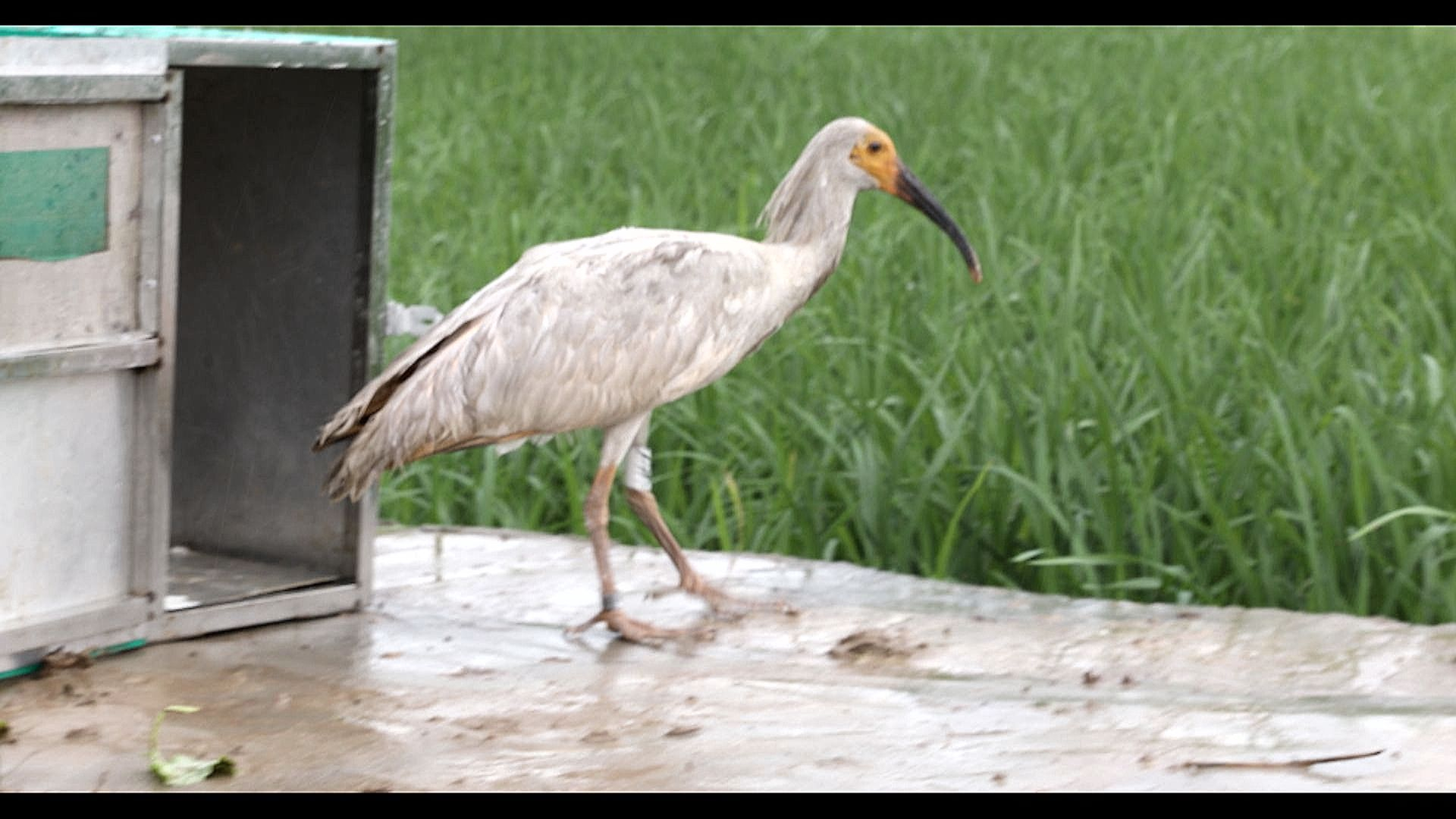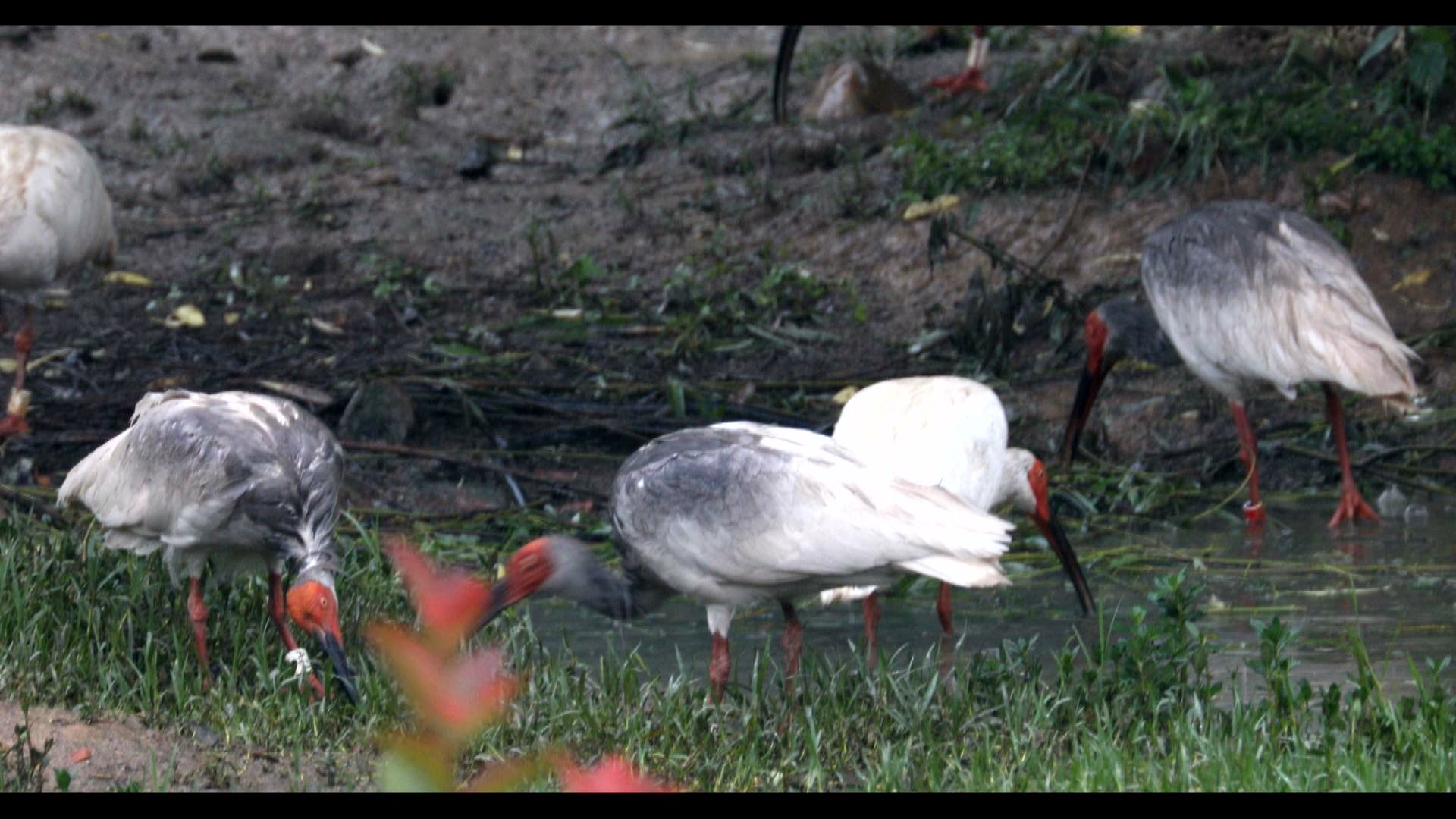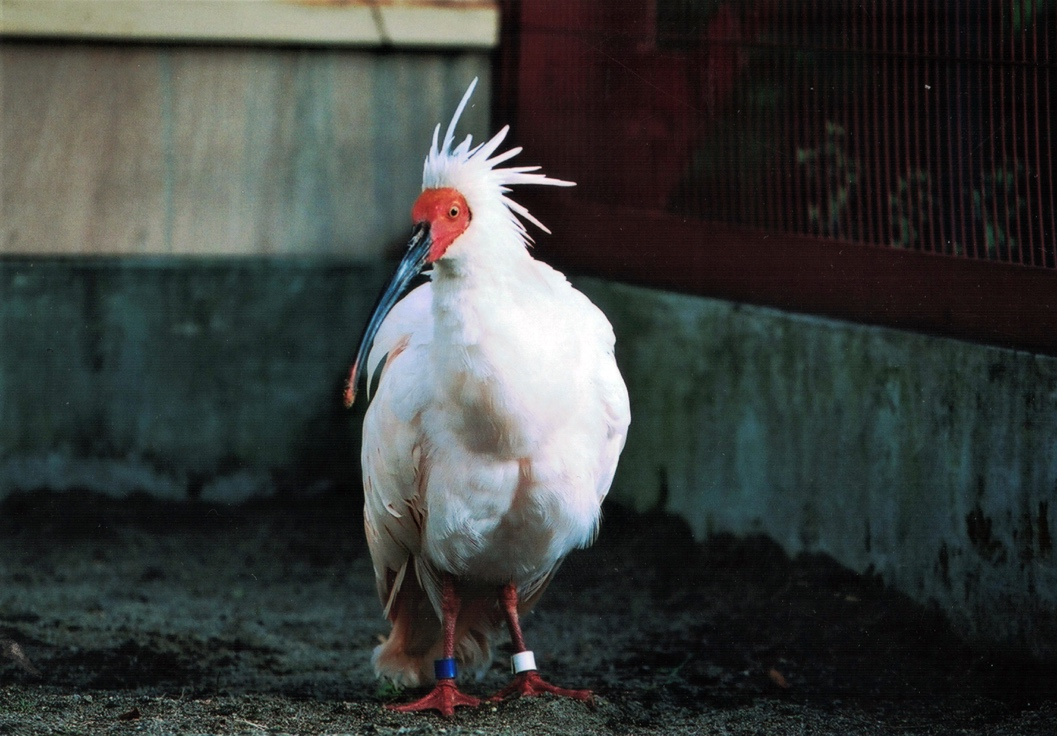

The way back home
The doors of two cages opened, and two crested ibises flew out. Conservationist Duan Ying watched them disappear over a vast rice field then turned to the last one curled in its cage.
“This one is scared,” she said, taking it out into her arms.
Despite the conservationist's gentle coaxing, the third bird refused to return to the wild. After several tries, Duan and her colleague had no choice but to put the bird back into the cage. The fledgling would be carried back to the Longting shelter for crested ibises until it is ready to return to the wild.
Yangxian County, northwestern China is a national nature reserve for the endangered bird. There are three crested ibis shelters in the county. The Longting shelter is mainly responsible for treating hurt birds that conservationists and local farmers rescued in the wild. Fledglings begin their first attempts to fly at this time of year, which has resulted in more incidents being reported.
“They are like my children,” said Duan Ying, referring to the crested ibises. “I start to miss them the moment I let them go. But the aim of conservation is to let them fly freely.”

A local villager found this crested ibis on June 14. According to the record, it showed no sign of trauma; it just failed to fly. / CGTN Photo
Hunted almost to extinction
The crested ibis used to be seen across Asia. From Southern China to Russia, the bird lived together with people and was even the subject of poetry. An ancient Chinese poem written in the ninth century reads,
“Fluttering crested ibis,
Flying across a pond in spring,
Resting on a green tree.”
Records of the bird also appeared in Japan at around the same time. Three references in the Chronicles of Japan mentioned the crested ibis, which is called “toki” in Japanese, meaning “peach flower bird.”
Unfortunately, both countries depended on rice production, and the crested ibis was seen as a pest. The bird would hunt for food in the rice fields, and farmers would kill it to protect their crops.
Hunting is one of the main reasons the crested ibis population decreased to near extinction levels. Wetland damage, overuse of pesticides, and the felling of trees are three other contributors. In 1981, to protect the species, the last five wild crested ibises (one male and four females) in Japan were captured and brought to the Sado Japanese Crested Ibis Conservation Center. They were considered to be the last crested ibises in the world then. To better sustain the genus, the Japanese government and international organizations decided to keep and breed them in captivity, but their attempts failed.
A miraculous return
In 1981, amazingly good news came out of China: After three years of careful searching, Chinese ornithologist Liu Yinzeng and his team found seven wild crested ibises in Yangxian County, China’s northwest Shaanxi Province. The group consisted of two adult couples and three nestlings, evidence that the species could still reproduce. Named the “Qinling Mountains No. 1 Crested Ibis Group,” the seven birds became the hope of the entire species.
China decided to protect the only existing birds in another way, situ protection. Four conservationists joined the mission to follow the seven crested ibises 24/7. They smeared oil on the trees the birds nested in to prevent its natural enemies from climbing up and followed the progress of each and every egg the birds laid.
By the end of 2018, the captive population of crested ibis in China had grown to 1,117, and the population in the wild was 2,829. More than 900 birds were also living in Japan and the ROK. China pulled off a miracle, taking the population from seven to 4,859.

Some 70 crested ibises live in Yangxian County’s ecological park. Most of them are bred in captivity. / CGTN Photo
A symbol of auspiciousness and friendship
Kin, the last Japanese crested ibis, died in 2003. In 1985, a male named Huanhuan was sent on loan from China to breed with Kin. The Japanese government had hoped that local crested ibises could carry on the line. Although the species’ scientific name is “Nipponia nippon,” meaning “Japanese bird of Japan,” Kin’s death marked the extinction of the Japanese indigenous born crested ibis.
The silver lining, however, is that Chinese and Japanese crested ibises were of the same species, which meant it was still possible to rebuild the Japanese crested ibis’ group by introducing Chinese ones.
Cooperation between China and Japan on the protection of crested ibises started in the 1980s. In 1998, then Chinese President Jiang Zemin visited Japan, gifting a couple of crested ibises Youyou and Yangyang. Two years later, a female called “Meimei” was given to Japan to diversify the group’s gene pool. Within 10 years, seven crested ibises in total were sent to Japan. While traditionally considered to be the symbol of auspiciousness, crested ibises are now a symbol of friendship between East Asian countries.

Meimei, the female ibis that was given to Japan in 2000. / Photo provided by Shaanxi Hanzhong Crested Ibis National Nature Reserve Administrative Bureau

Copyright © 2018 CGTN. Beijing ICP prepared NO.16065310-3
Copyright © 2018 CGTN. Beijing ICP prepared NO.16065310-3